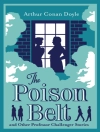In ‘To the Lighthouse, ‘ Virginia Woolf explores the complexities of human relationships and the passage of time through innovative narrative techniques and rich, impressionistic prose. Set against the backdrop of the Ramsay family’s summer home on the Isle of Skye, the novel unfolds over three parts, employing a stream-of-consciousness style that delves into the inner thoughts of its characters. This modernist masterpiece reflects the changing perceptions of reality and the fluidity of time, echoing the existential uncertainties of the early 20th century. Through vivid imagery and philosophical musings, Woolf captures the ephemeral nature of life and art, illustrating how memories shape our identity and relationships. Virginia Woolf, a seminal figure in the literary modernist movement, was deeply influenced by her surroundings, social context, and personal struggles. The loss of her mother at a young age and the subsequent impact on her own family dynamics informed her exploration of themes such as grief, love, and creative expression. Woolf’s interest in the interplay of time and consciousness is reflective of her progressive ideas on gender and identity, which continue to resonate in contemporary discourse. ‘To the Lighthouse’ is highly recommended for readers seeking a profound exploration of human experience and perception. Woolf’s intricate character studies and thematic depth offer a rich, immersive reading experience that challenges conventional narrative structures. This novel not only exemplifies Woolf’s innovative literary techniques but also serves as an essential text for understanding the evolution of modern literature.
Sobre el autor
Virginia Woolf, born Adeline Virginia Stephen on January 25, 1882, was a central figure in the Bloomsbury Group and an innovator in the narrative mode of the 20th century. Woolf was an English writer whose modernist approach redefined the structure of the novel with her emphasis on stream-of-consciousness. Woolf’s legacy includes seminal works that delve into the complexities of human consciousness and the condition of women in society. ‘To the Lighthouse, ‘ published in 1927, remains one of her most acclaimed novels. This narrative explores the Ramsay family’s dynamics and delves deeply into the characters’ psychological facets. The novel is renowned for its poetic use of language and exploration of time, memory, and individual perception, characteristics that reveal Woolf’s literary style. Woolf’s work was influenced by her own life experiences and her struggle with mental illness, which she chronicled with poignant introspection and lyrical prose. Her writing is characterized by a rhythmic and experimental use of language, alongside a revolutionary perspective on character and plot development. A member of the feminist pantheon, Woolf also penned ‘A Room of One’s Own’ (1929), a groundbreaking essay on women’s access to the literary profession. Virginia Woolf’s contributions to literature continued until her untimely death by suicide in 1941, leaving behind a profound legacy that continues to influence writers and readers alike.












